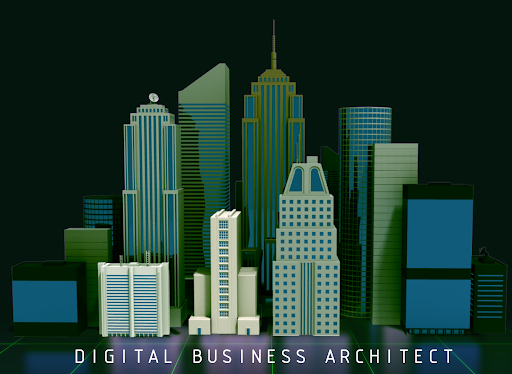Lean approach: also in Tech fields

Sustaining your progress: Lean IT as a lifestyle.
All of the previously mentioned tools and methods are highly likely to become an inflection point for any company that implements them as they enable the creation of an optimum lean IT environment.
But, is this enough?
Let’s put an example. Try to think of building a lean IT system as the beginning of a healthy routine. Getting out of bed early, all of those exhausting workouts, skipping all of those delicious pizzas and luscious glasses of wine…it is not easy, right? But overtime you start to see changes: you shed a few pounds, you feel stronger and full of energy. All of the hard work is paying off. A common mistake people make is easing that healthy lifestyle once they get to this point, some even quit. Quickly, you gain back those pounds you lost, your muscles become weaker, and all of your effort is completely lost.
Lean systems function very similarly. The beginning is not easy, but overtime you see that your company has an improved structure which is already generating gains. Losing all of this would be an utter mistake. That’s why ensuring long-term sustainability is as important as the creation and implementation of a lean environment.
We have elaborated a six-step system companies can use to ensure the sustainability of a lean IT system. The first step is the introduction and implementation of sustainable behaviors, which are the foundation of the lean system or ‘house’. They are very important for many different reasons, mainly:
· They foster a new routine mechanism, which ensures constant improvement of the environment.
· They ensure support and coaching when needed to whom may need it.
· They reinforce constant learning as a new organizational culture is built.
2. Change in accountability. Instead of fixing the blame on someone, a company should focus on the process itself. Trying to find the source of a problem, any missed expectation or fixing the problem itself is much more effective approach that is likely to provide a positive outcome.
3. Interlocking leader standard work. Interaction between all areas is needed, since tracking items requires knowledge at all levels, from associates all the way to executives must be aware. For this reason, short daily meetings are a great feature to implement as it will be built upon a much more visual management system whilst interacting and creating connections between sectors and escalating problems.
4. The importance of assessment and reflection. Statistics show that over 70 percent of lean transformations fail. However, we strongly believe that the key to avoid failure is much simpler than it seems: stronger unification. The same principles that were implemented in the transformation process should be applied in the organization itself. A good starting point to unify the process is through regular assessment and reflection. And, if needed, countermeasures to the transformation itself (Orzen, Paider, 2017).
5. On the other hand, a crucial element for any leader is hansei, or self-reflection. Leaders should take the time to understand the importance of the impact that they have, not only on people but the company as a whole. For this reason, leaders should introspect themselves and their actions, take a step back and look at the big picture of the process.
6. Last, but certainly not least, comes continuous learning. A lean thinker is a learner (Orzen, Paider, 2017). Hence, continuous learning should be seen as the DNA of every organization as it helps keep up with with such a rapidly changing technological environment that demands for changes. Learning must be implemented in every part of a lean transformation, from the processes and daily huddle to the execution, in order to sustain all progress whilst staying updated.

Ingersoll Rand Security: how lean IT changed this billion-dollar multinational.
Ingersoll Rand is a US$14 billion American multinational that provides a variety of products, mainly industrial equipment and technologies. A problem this company faced was the complicated selling process. Its wide variety of product configurations, as orders are customized, leads to problems such as delays and order errors.
To deal with this, they began by taking a step back and understanding the source of the issues. Once these bottlenecks were identified, the group created a new standardized process establishing a collaborative relationship between IT and operators, which enabled rapid and simple enhancements to existing software (Bell, Orzen, 2011). Defects quickly dropped by over 50 percent during the first semester. A long-term plan was also established to sustain all this progress.
Final thoughts
In short, lean IT is not only a methodology but also a philosophy that helps improve IT operations. As it focuses on customers needs and value-creation whilst reducing waste, it enables an improved and efficient environment in any company.
Throughout this post several advantages of the application of lean IT have been mentioned. However, we believe that the main advantages of lean IT are: a more efficient use of resources and strong company culture. We think that the implementation of these is likely to make a turning point for any company.
On the other hand, lean IT also presents a series of disadvantages, such as lack of flexibility of the margin of errors. Also, lean IT requires the entire system to function properly, hence if one part has any error, it will lead to inconsistency. The implementation of lean IT can also be stressful and uncomfortable for employees as it is a complex system, which is very difficult to manage. As mentioned throughout the text, lean IT requires large investments not only at the beginning but also continuous investments, as it requires constant feeding and improvement.
Future prospects: Lean IT
We believe that lean IT will be used by an increasing number of companies as it is a change that takes place at every level of a company, and thus provides an overall benefit. Unlike more traditional modifications and changes, the implementation of lean IT will completely change the core of the company. Regardless of requiring constant investments, its benefits are limitless.
Finally, as companies begin to see the remarkable results of lean IT, more companies are likely to join the lean IT philosophy.
About us:
“Lidia Bouza Ávila : I study Management and Technology, my areas of interest include human resources and accounting. I see myself in 5 years as a business teacher. My hobbies include dancing and reading. @lidiabouza “
“Lara Li Ramos Benítez. I am a Management and Technology student admirer of innovation and digital businesses. In the foreseeable future I see myself working in a company in Human Resources or IT. I also love travelling, meeting new people, cooking and working out “.
“Angélica Ávila Scarpetta: I am a Management and Technology student. Being an insatiable learner and a creative soul, I gravitate towards areas in the business field where I can work creatively, such as marketing. I see myself developing a career in the luxury goods sector in the future, as a marketing director, creative director or supply chain manager. Nevertheless, my ultimate goal is to have my own cosmetics company” @angeliccavila
“Karen Pérez Bascuñana: I study Management and Technology as my areas of interest are within the business and digital fields. In the future I see myself working in digital marketing. I also love cosmetics and travelling. @Kaarenn_9”
“Marta Montero Sueiro: I am a Management and Technology student. My interests include financial economics, digital transformation and marketing techniques. I am also a really curious person and I love art and travelling and learning from different cultures. My main hobbies are music and dance. @mooontiii_”

Business Intelligence, Continuous Improvement, Customer value, KPIs, Lean, Lean It, Lean Software Development, Strategic alignment, Sustainability
